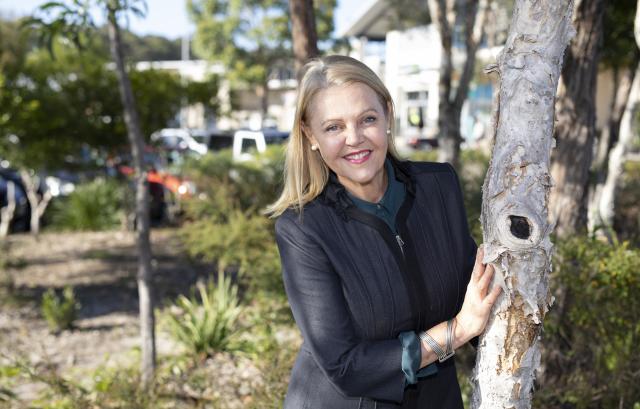Between devastating floods, ongoing Covid recovery and horrific events overseas, it can seem inappropriate to talk of housing.
However, seeing this crisis amplified even further by the floods, and attending former Councillor June Colley’s life celebration whose efforts nearly 20 years ago included affordable and emergency accommodations, I believe gives justification. To still be grappling with this both frustrates and astounds me and given the current confusing commentary and blame game doing the rounds, it is time to revisit and untangle!
When I first spoke on this as a Councillor some seven years ago, I tackled the confusing terminology by using social housing in reference to government-owned and managed properties for those who meet a financial criterion including no or very low income. Whereas, community housing was related to property managed by community housing organisations, such as Coast2Bay, who develop models containing a mix of open market and subsidised dwellings available at discounted rates suitable for our workers. Then there is that term, affordable housing, that pops up everywhere and into headlines, which raises the question – affordable to whom? – hence difficult to define! Local government planning schemes consider affordable living and housing affordability in efforts to accommodate varying income levels and household types within their boundaries. Many simply refer to this as affordable housing.
Different levels of government all have a role in housing, regardless of what they say!
I have watched the blame game unfolding, where Federal MPs have said it is the role of local and state governments to provide affordable housing, local governments responding it is state government, who in the return volley say its role is the provision of social housing. In addition, assistance in affordability through funding of headleases and partnerships, as well facilitation of land through urban expansion which has been used for decades and yet we still have a crisis! Confused yet? Understandably, so I will endeavour to simplify.
Local government can assist in the provision of affordability through partnerships, its planning scheme and housing strategies. They can also seek allowances within state legislation, such as the temporary planning instrument offered early last year in relation to secondary dwellings in Noosa. However, any such changes need to be carefully considered within the local planning scheme, as Noosa is loved for a reason, and we don’t want to bring unintended consequences. So, given that there are no mechanisms to constrain property prices within an expensive private market, balance and innovation must be sought to provide solutions that work for our community.
Now to State Government, who are responsible for the provision and management of social housing, whether department-owned or through headleases. They also offer grants for public private partnerships (ie with organisations, developers or Council) to build the social or community component of mixed model projects.
These are occurring across QLD and Australia, and there are some incredible examples of sustainable, liveable, loveable, and truly enviable affordable projects including Nightingale, whose designs ensure no air conditioning is ever needed.
We have a couple of these mixed models in development application stage with Council, others waiting for land review finalisation to submit for funding. However, as with local government planning scheme options, unintended consequences should be considered. State governments also have the ability to approve developments outside of local planning schemes, with a recent local example being the DAF boatshed, which we had to lobby state so that it now must comply with the Noosa Plan. Or they could expand the urban footprint without our OK or capacity determined. Let me be clear, they are not doing any of this, however, if our screams keep going and we do not resolve in other ways?
Thirdly, Federal government who provides the funds to state governments which is understandably critical, as well various programs such as the National Rental Affordability Scheme (NRAS) which is about to come to an end without a replacement. They also have a role through the National Building Code, which some say is out of touch with design options that reduce build costs, as well to support sustainable living.
Lastly, we come to our role as purchasers, renters and residents, through our expectations, our choices and what we will or will not support. For example, my last community survey saw a majority not in favour of reviews on overlays or other restrictions in efforts to address our housing crisis.
Why is this relevant?
Because over the last four years, our never-ending search for state or council land that may be surplus or unallocated has led to disappointment as, yes, there is land, however, so far it is all constrained except a couple of sites. Either because it is under a Native Title claim, the carbon offsets make the business case unfeasible, is flood mapped, or as with the decommissioned TAFE site, covered by biodiversity overlays. What we will or won’t support, impacts government decisions and actions, and we need to understand our role in this.
There have been many considerations and applications over time to address our housing needs. These include Material Changes of Use on rural residential sites within walking or cycling distance to town that seek to create very Noosa style community living!
Not the old style that may have failed previously, but new shiny models that are very successful and range in prices from affordable to in the millions.
Then there is private or community-managed transportable projects, such as we have already in Everglades and Bougainvillea Gardens for our over 55s as examples. The beauty of transportable projects is you can include whatever you need in their design, be cutting edge, and if, in decades to come, they are no longer required, be repurposed or shipped away.
An additional benefit is they are above ground level making them extremely viable options for sites that are currently negated due to their one in one-hundred-year flood status which is a whole other conversation. Let’s not forget those loft properties within light industrial areas that could be reconfigured into work/live options, as well a host of other community-inspired suggestions. All it takes is community will and support.
State can also maximise current social housing options that could be upzoned for share houses or units, with the Department of Housing currently working with Council on this in order to get a supply of accommodations suitable for couples or solos which we do not have and desperately need. As I have raised with the Minister previously, this can then free up underutilised larger houses as we have a number with sole occupants who have lived in this community their whole lives with their children now having flown the nest. It is good policy not to displace these much loved residents to other regions away from their support networks, jobs and family, and the quicker we can provide a downsizing option, the quicker these larger homes become available.
These and much more have been discussed and investigated over the last year at the Housing Action Group, and even though progress is never at the speed I like to work at, we are getting to that pointy end.
Again, I go back to the simplicity of what I endeavoured to achieve through this group. For all levels of government to work together on mitigating the contributors and challenges. To be innovative and not ignore what has worked previously. To be a leader in this space, and not a bystander, or worse, be influenced by commentary over recent years such as ‘if you can’t afford to live here, move!’ or touting that affordable projects turn into slums. The reality is workers in our key industries look after our loved ones and service our community in multiple ways, including as volunteers. They need accommodation they can afford, as do our youngsters and retirees. This is about our people, our home and our social fabric, which gets tattered and torn apart piece by piece when we do not act. And every person in this community has a role, even if only supporting efforts.
With Noosa Council completing its Housing Needs Assessment, and embarking on its Housing Strategy, may the many clever, innovative and fabulous solutions put forward be considered, and by state. As I have said before, in speeches, in columns and articles, we need to stop finding all the reasons we can’t, work out how we can, and get on with it. No further excuses can be accepted as we have been listening to these for too many decades.
Hopefully that has untangled until next time?
Sandy







